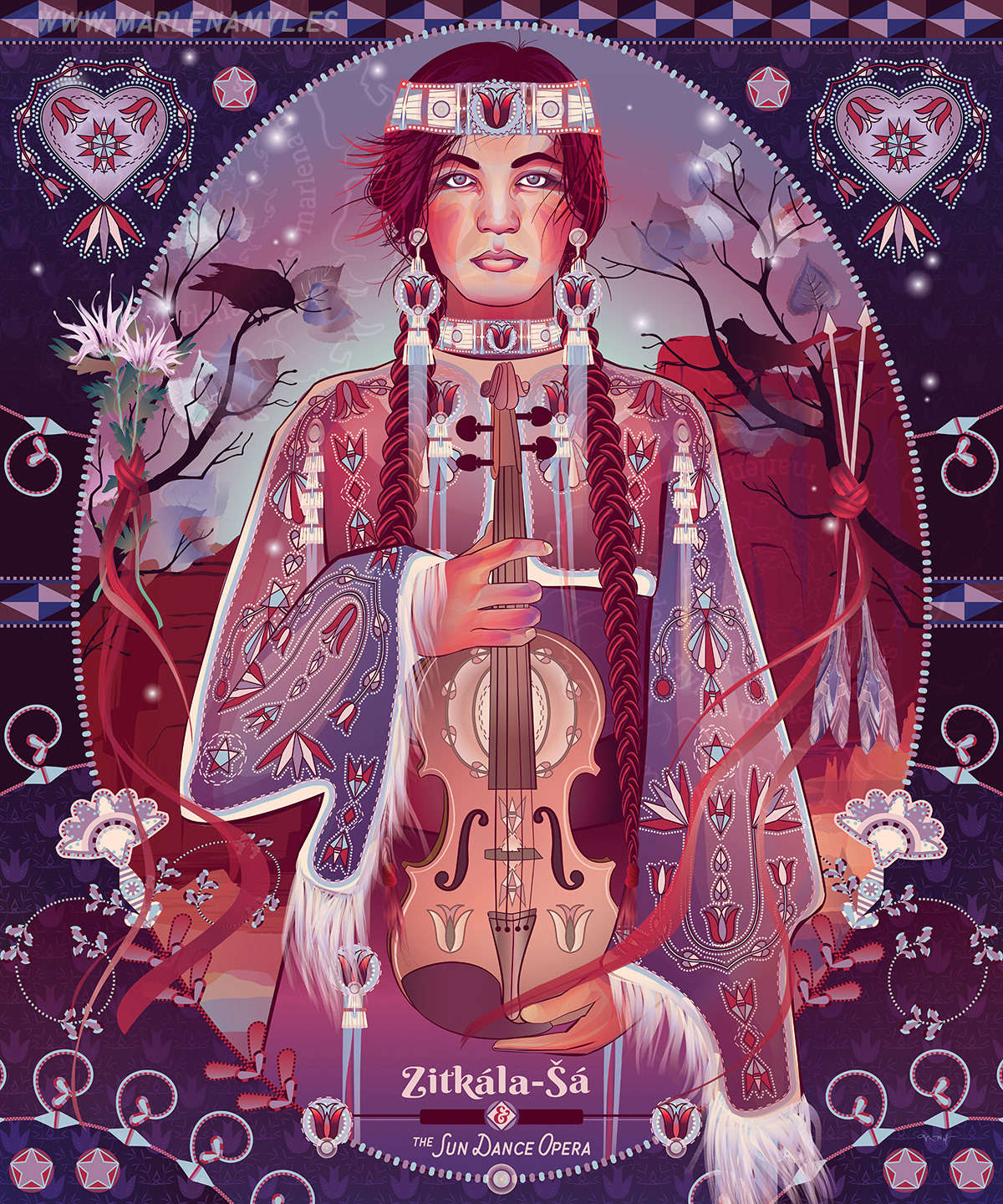
ZITKÁLA-ŠÁ & THE SUN DANCE OPERA
Vector Illustration, 2019
Zitkála-Šá (Red Bird, 1876-1938, English name Gertrude Simmons Bonnin) was a Yankton Dakota (Iháŋktȟuŋwaŋ) writer, classically-trained musician, educator and political activist. She is known as one of the most influential Native American activists of the 20th century — she fought for citizenship, sovereignty and land rights for tribes. She was co-founder of the National Council of American Indians in 1926, which was established to lobby for Native people’s civil rights they had long been denied. Zitkala-Ša served as the council’s president until her death in 1938.
Her early works chronicle her struggles of cultural identity while living in two worlds. She also published “Old Indian Legends”, an anthology of Dakota stories in 1901, which were among the first works to bring traditional Native American stories to a widespread white English-speaking readership.
Later in her writing career, her writings focused on Native civil rights and the legalized robbery of Native lands: Her expose “Oklahoma’s Poor Rich Indians” (1924) would led to the commission of the Meriam Report, which provided much of the data used to reform American Indian policy through new legislation: the Indian Reorganization Act of 1934. It strongly influenced succeeding policies in land allotment, education, and health care. The report found generally that the federal government was failing at its goals of protecting Native Americans, their land, and their resources, both personal and cultural.
Before that time, in 1902, she published an article in Atlantic Monthly called, “Why I Am a Pagan.” She writes about her traditional beliefs and counters the trend of showing Native writers conforming to traditional Christianity. Expanding culturally on those topics explored in that article, she wrote the Sun Dance opera in 1913; using her violin to transcribe traditional Dakota songs, she collaborated with William F. Hanson to bring the opera into fruition.
(Award: 2019 Red Cloud Art Show | 1st place, Division: Photography/ Digital Art)




NATIVE AMERICAN RELIGIONS BANNED
Native American religions were banned at the time (until 1978), yet Zitkala-Ša used the Sun Dance (an outlawed dance) as the setting for her opera:
“She may have considered that placing a very Indian ritual in the context of high opera was a cultural dissolution of hierarchy. If Native music were considered as valid as the sublime expression of western civilization, then Indian peoples would have to be considered for their own values and not be subject to racial injustice.“
-P. Jane Hafen, A Cultural Duet Zitkala Ša And The Sun Dance Opera
The opera setting is the Pipestone quarries (Čhaŋnúp-ok’é) of Minnesota, a sacred place of the Dakota people near her reservation and it is where the Yankton Dakota originate in their traditional teachings. (In reality, she also worked to prevent of mining at the sacred Pipestone quarries). Not only located on sacred lands, she also included acts were only Native Americans could perform the traditional songs and dances. The premiere performance featured trained opera singers in the main roles, including the role of Ohiya that she named after her son. It is a love story of Ohiya fighting to win the heart of Winona with various people trying to prevent it. Zitkála-Šá also included the role of a Heyoka (sacred clown) in her opera as another example of showcasing outlawed religious figures.
Visit my art at marlenamyl.es
Thank you for viewing.


